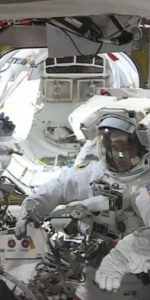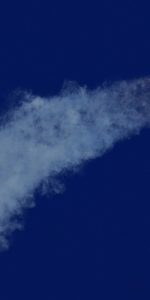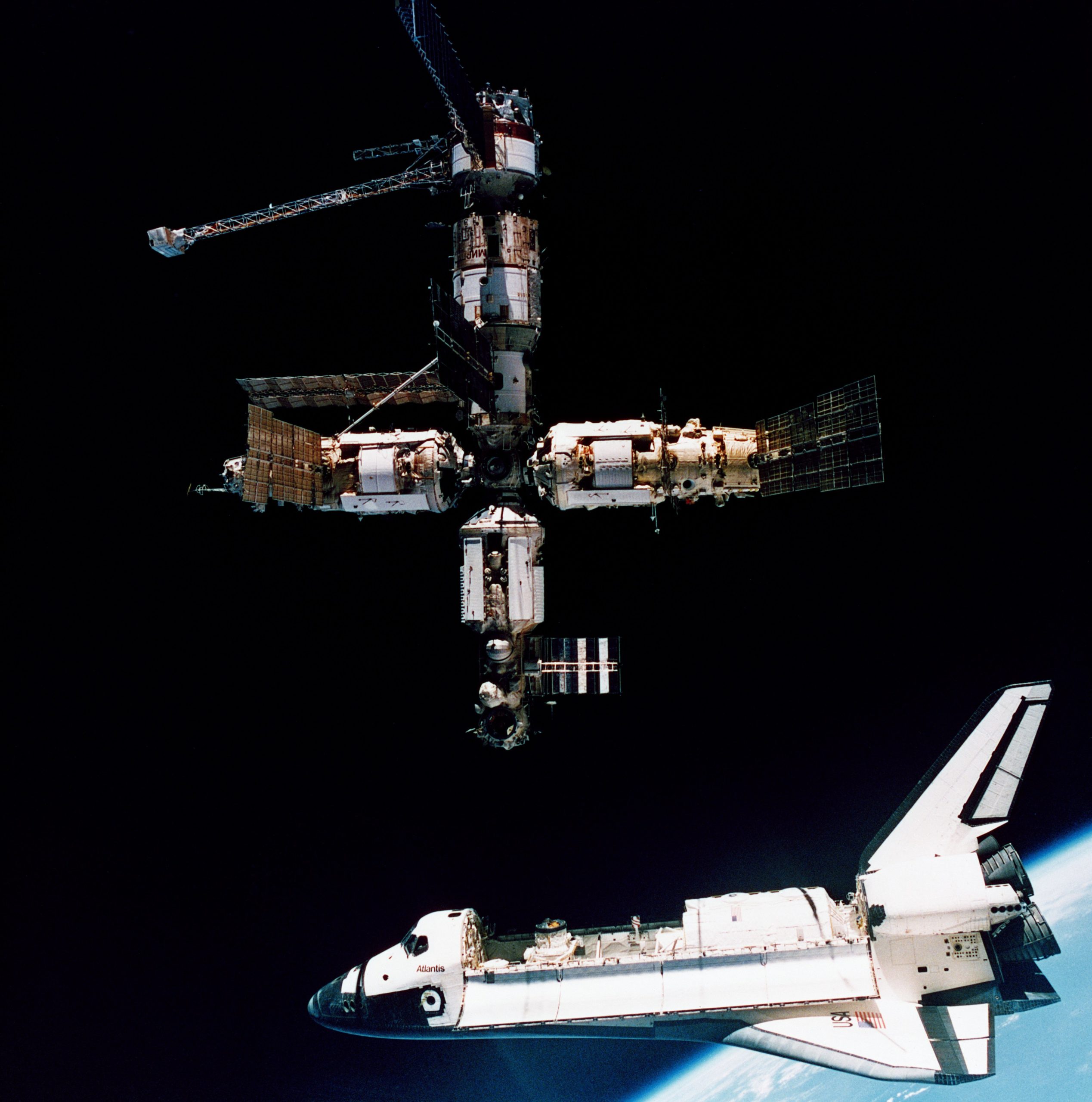
Twenty-five years ago, this summer, six U.S. astronauts and four Russian cosmonauts circled the Earth together in a remarkable exercise of co-operation between two former superpowers and ideological foes. In June 1995, Space Shuttle Atlantis and her crew of seven performed the first docking between an American spacecraft and a Russian space station, linking up smoothly with the sprawling Mir orbital outpost and its own three-man crew. And when the two ships parted company, each had different crew members, as Atlantis returned to Earth with an outgoing Mir crew and the most flight-experienced U.S. astronaut and the station continued its journey with fresh two-man crew. In many ways, STS-71 laid the cornerstone for the International Space Station (ISS).
The moment had taken a long time to arrive. American and Soviet manned ships had docked in Earth orbit in July 1975 during the Apollo-Soyuz Test Project (ASTP), but it was a standalone mission and not a long-term co-operative effort. There were hopes of flying a cosmonaut aboard the shuttle and even performing a docking with a Salyut space station, but the Soviet invasion of Afghanistan in 1979 and a steady deterioration in relations between the superpowers scuppered such plans.
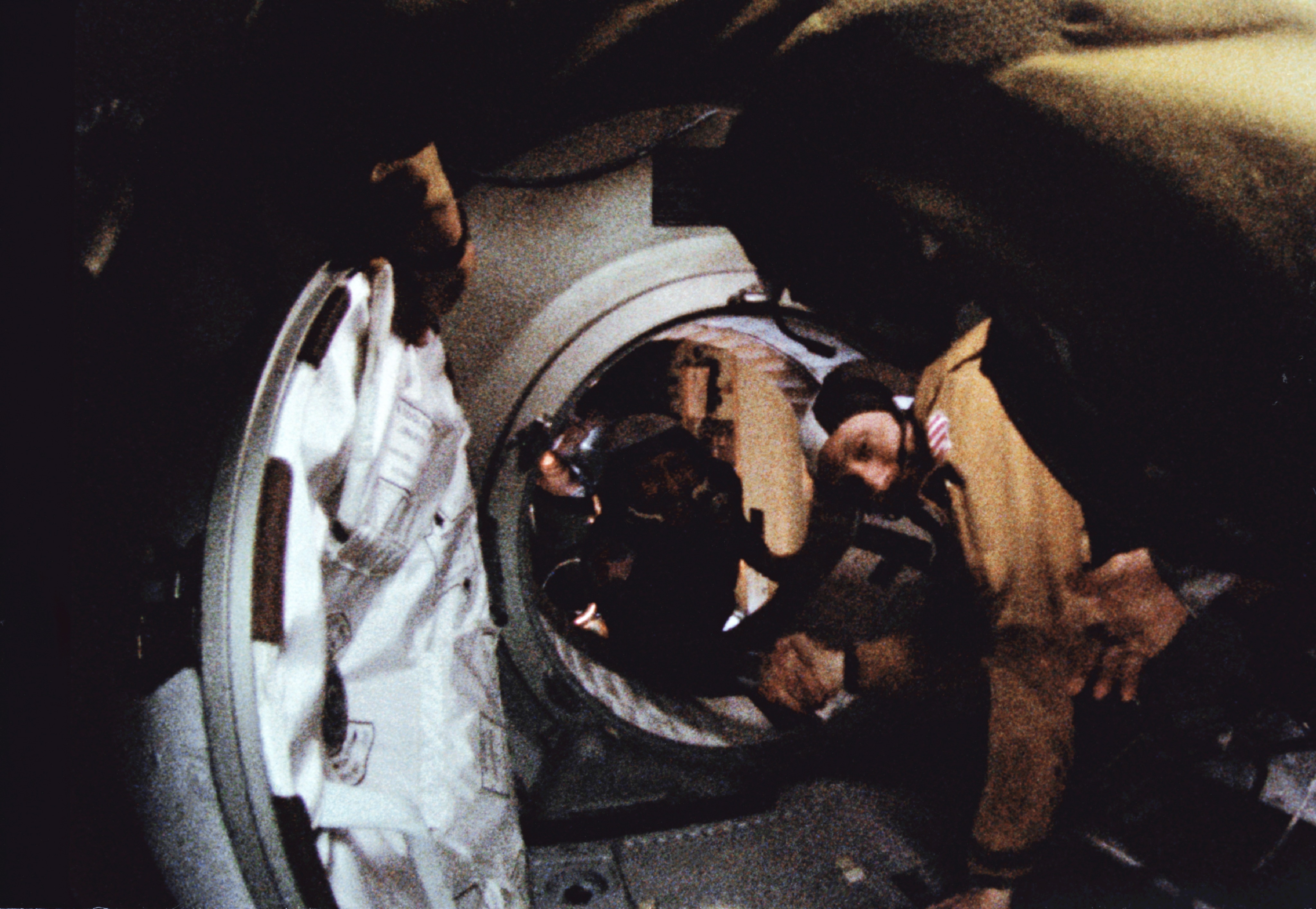
However, with the collapse of the Soviet bloc in the early 1990s and the risk of Russian technology haemorrhaging to undesirable locations like Iran, the United States was keen to foster co-operation with its old enemy. In July 1991, U.S. President George H.W. Bush and Soviet General Secretary Mikhail Gorbachev agreed to fly a cosmonaut on the shuttle and an astronaut for several months aboard Mir. By June of the following year, such plans had evolved to include a shuttle-Mir docking flight. In October 1992, cosmonauts Sergei Krikalev and Vladimir Titov came to the United States to begin training and in February 1994 astronauts Norm Thagard and Bonnie Dunbar likewise headed to Russia.
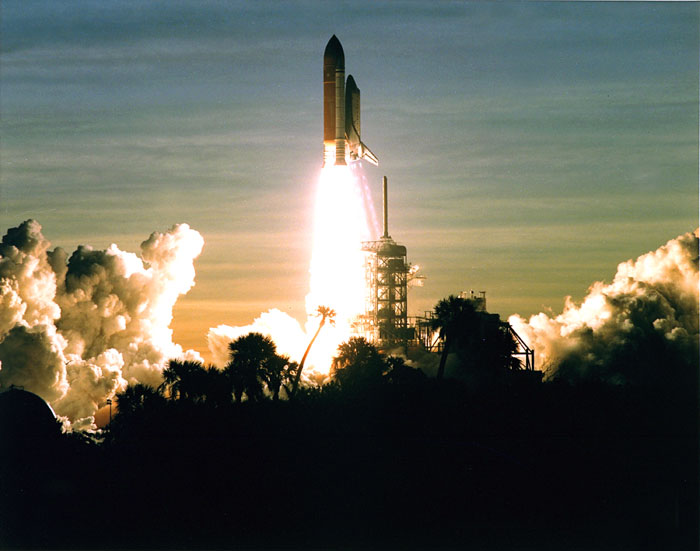
Krikalev flew an eight-day shuttle flight in early 1994 and Titov flew a year later on a mission which performed a close rendezvous with Mir, testing many of the tools and procedures for an actual docking. By this stage, the co-operative effort had expanded to include as many as ten shuttle-Mir dockings, up to four long-duration flights by U.S. astronauts and the possibility of using Russia’s Soyuz spacecraft as an assured crew return vehicle for the ISS.
And in June 1994, the STS-71 crew was named for the first shuttle-Mir flight. Commanding the mission was NASA’s chief astronaut, Robert “Hoot” Gibson, with Charlie Precourt as his pilot and mission specialists Ellen Baker, Greg Harbaugh and Bonnie Dunbar. They would be joined for the first half of their flight by the Mir-19 crew of cosmonauts Anatoli Solovyov and Nikolai Budarin, with the outgoing Mir-18 crew of Vladimir Dezhurov, Gennadi Strekalov and Norm Thagard returning home with them.
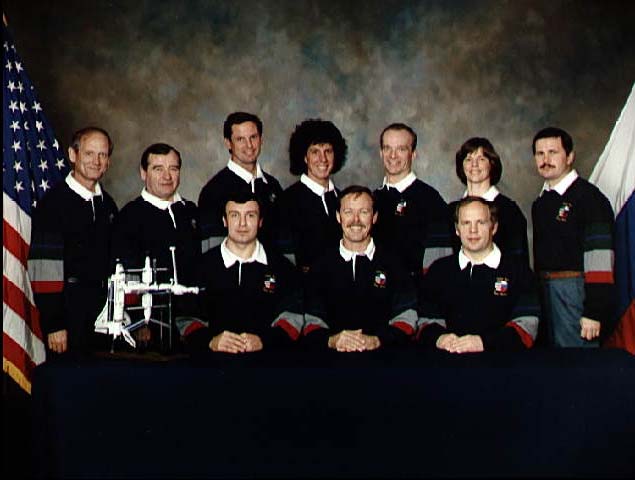
As such, STS-71 would become the first and only shuttle flight to launch with seven crew members and return to Earth with eight. And in so doing, it would become the first shuttle mission to land with different crew members and with a larger number of crew members than that with which it had launched.
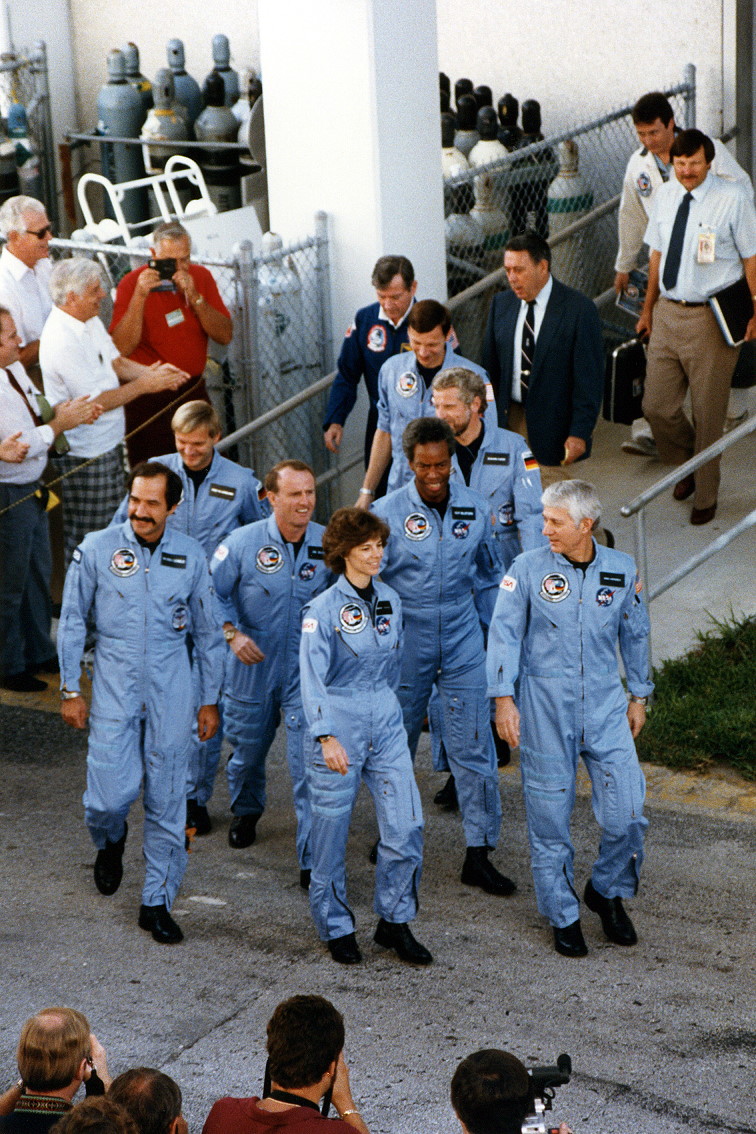
As Dezhurov, Strekalov and Thagard prepared for their launch from Baikonur in Kazakhstan aboard Soyuz TM-21 on 14 March 1995, however, the situation turned increasingly ugly. The United States had already pledged to pay Russia some $400 million for up to 21 months of NASA astronaut time on Mir, up to ten shuttle dockings, a specialized docking module and exclusive use of the station’s Spektr and Priroda modules for research. Spektr was scheduled to launch in February 1995, just before Thagard’s arrival, carrying up to 2,500 pounds (1,100 kg) of research gear for him to use.
But the collapse of Russia’s ruble in October 1994 conspired to delay Spektr until May 1995, meaning Thagard would spend two months aboard Mir with relatively little to do. Nevertheless, he set a record for the longest single spaceflight by an American citizen. By the time he returned to Earth aboard STS-71, Thagard had chalked up 115 days in space, far exceeding the 84 days logged by the final Skylab crew in February 1974. And when he counted his four previous shuttle flights, Thagard had accrued a total of 140 days away from Earth.
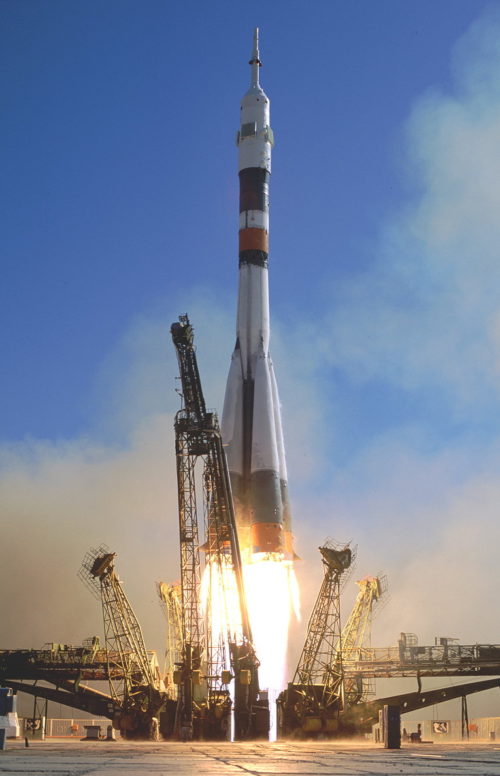
With STS-71 scheduled to launch between 19-24 June 1995, it serendipitously became the 100th U.S. manned spaceflight since Alan Shepard’s suborbital mission aboard Freedom 7 in May 1961. Due to the requirements of achieving rendezvous with Mir on the third day of the mission, and ensuring the optimum use of propellant, Atlantis had only a few minutes available in “launch window” time. “Rendezvous started right here,” said Precourt of the launch. “We had to wait for the moment in time when Mir’s orbit was directly overhead of us and we could insert ourselves into the same plane that they were in.”
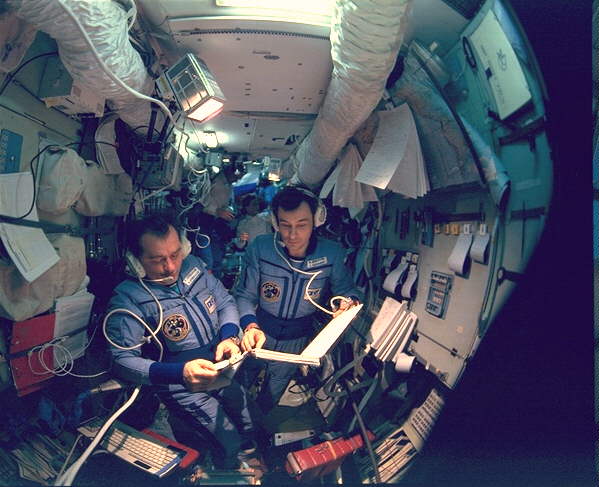
Celestial mechanics might have co-operated, but weather certainly did not, and an initial attempt to fly on 23 June was scrubbed as lightning was recorded a few miles from the pad. Heavy clouds and thunderstorms put paid to a second try on the 24th, which garnered much annoyance from Mir crewman Strekalov, who wanted to get home for his daughter’s wedding.
At long last, and with only a 60-percent chance of good weather, Gibson and company threaded the needle at 3:32 p.m. EDT on 27 June and roared smoothly into space. Interestingly, they inserted into one of the lowest initial orbits ever achieved by a shuttle, with an apogee of 180 miles (290 km) and a perigee of 98 miles (57 km). This allowed them to close the 8,000-mile (12,800 km) distance to Mir at a rate of about 1,000 miles (1,600 km) with each 90-minute orbit. Four hours into the flight, Gibson and Precourt slightly lifted Atlantis’ altitude and slow their rate of closure on the space station.
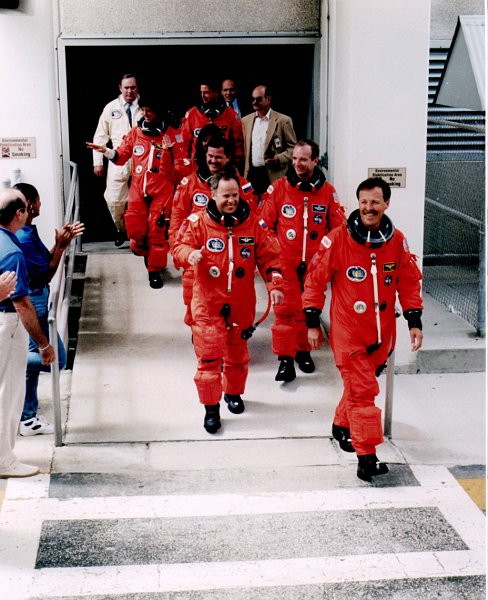
As the pilots executed the rendezvous, the remainder of the crew busily activated the Spacelab module in the shuttle’s payload bay for a week of medical research and powered up the Orbiter Docking System (ODS) to permit Atlantis to link up with Mir’s Kristall module. (The latter had originally been planned for dockings with Russia’s ill-fated shuttle, Buran, and it was a measure of some irony that the only shuttle which ultimately used Kristall was an American one.) Docking day, 29 June, also happened to be Precourt’s 40th birthday and proved a busy one for the entire crew.
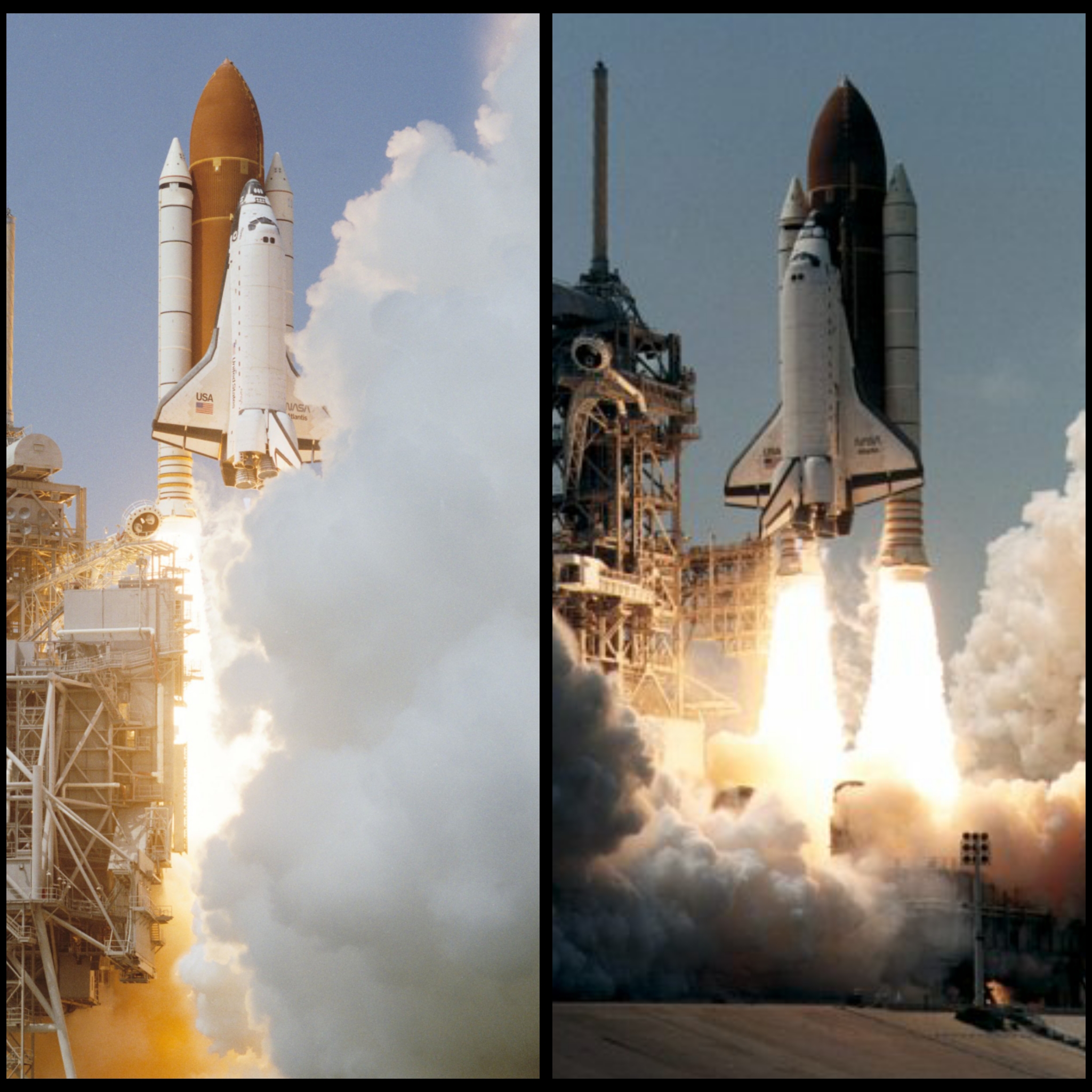
Shortly before 4 a.m. EDT, the pilots positioned their ship about nine miles (15 km) “behind” Mir. This set Gibson up for the Terminal Initiation (TI) burn, which served to fly Atlantis “beneath” the station along the Earth Radius Vector (or “R-Bar”), tracing an imaginary line from Earth’s center up to Mir.
This approach profile was quite different from previous shuttle rendezvous, in that in used Earth’s own gravity gradient to naturally brake the final approach and provided a margin of safety in the event of a thruster failure, as well as avoiding plume impingement upon the Mir solar arrays.
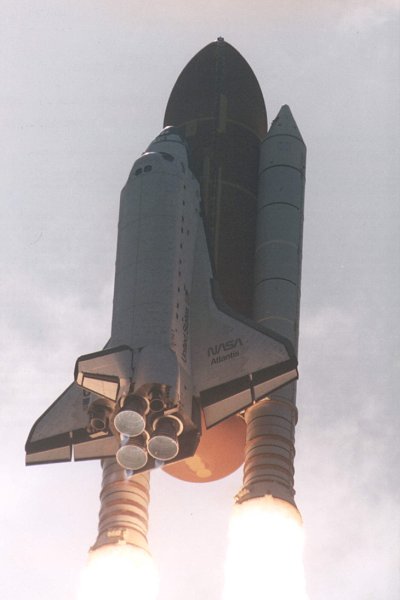
Gibson took manual control of his ship at 2,600 feet (800 meters) and used inputs from Atlantis’ rendezvous radar and laser sensor to reach a station-keeping halt at 250 feet (75 meters). Permission to proceed was jointly granted by NASA Flight Director Bob Castle and Russian Flight Director Viktor Blagov and Gibson advanced steadily toward Mir and halted again at 33 feet (10 meters).
The ODS was placed into its ‘active’ configuration, extending the capture ring outward and disengaging its five locking devices. Physical contact between Atlantis and the station came at 9 a.m. EDT, some 250 miles (400 km) above Lake Baikal. And with a combined mass of 507,000 pounds (230,000 kg), they became the largest single manned vehicle ever operated in space.
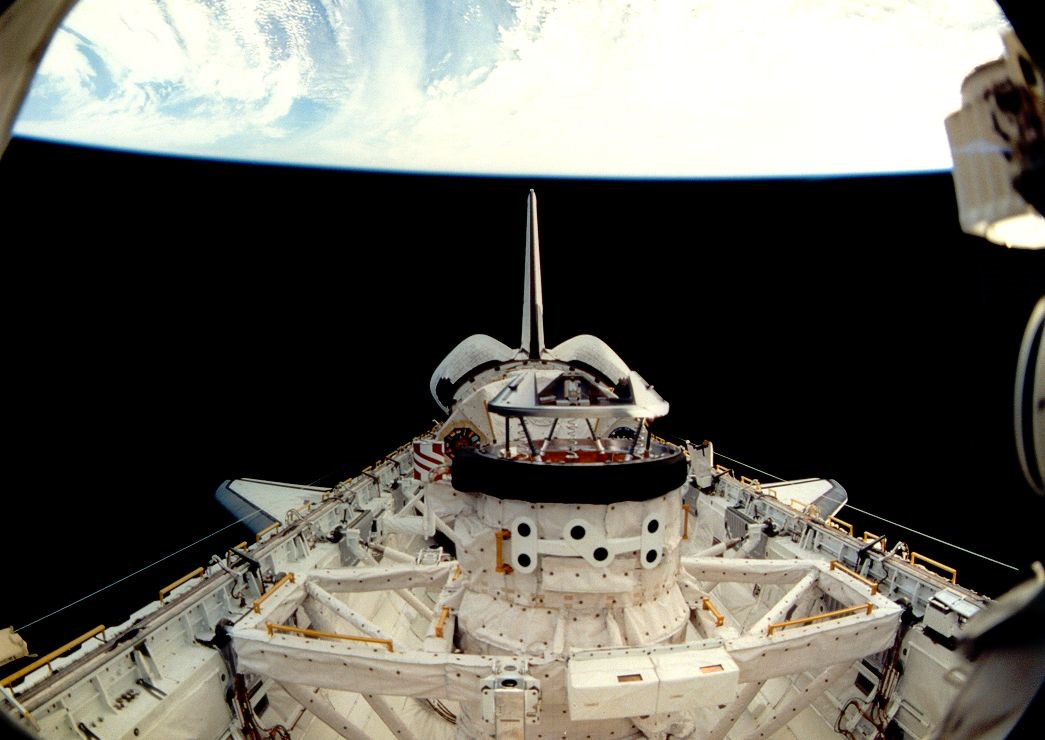
“Houston, Atlantis,” Gibson radioed. “We have capture!”
“Copy, capture,” replied Capcom Dave Wolf in Houston. “Congratulations Space Shuttle Atlantis and Space Station Mir. After 20 years, our spacecraft are docked in orbit. Our new era has begun.”
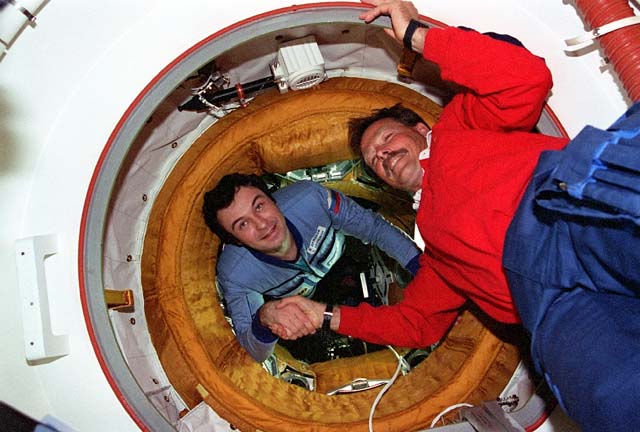
Following a process of pressurization and leak checks, the hatches were opened and in a highly symbolic gesture, the respective commanders of the two ships—Gibson on the shuttle, Dezhurov on Mir—shook hands. Precourt joked to Thagard that he was upside down, to which the United States’ most seasoned spacefarer retorted that, actually, the STS-71 newcomers were really upside down.
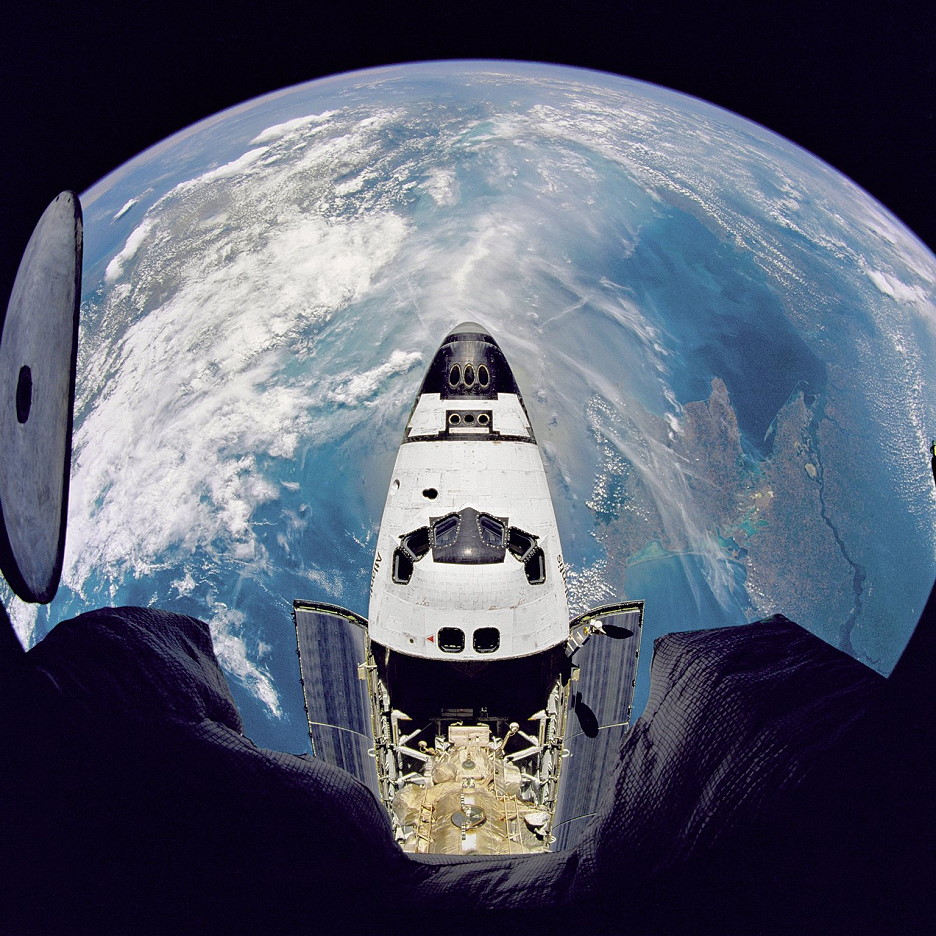
One of the earliest acts was a welcoming ceremony for the ten crew members aboard Mir, after which the specially moulded seat liners for Solovyov and Budarin were moved over to the Soyuz TM-21 spacecraft, which they would use for their return to Earth in September 1995.
At the same time, Dezhurov, Strekalov and Thagard officially became STS-71 crew members and recumbent seats were set up on Atlantis’ middeck. “Another modification was to use the recumbent seats of the shuttle,” said Baker after the flight, “so that they would have the gravity vector going through their chest, rather than the head to the toes, which made the forces of re-entry a lot easier on them.”
For the next five days, the two crews worked together. The results of Thagard’s four months of scientific research—disks and cassettes full of data, more than a hundred urine and saliva specimens, 30 blood samples, 20 surface samples, 12 air samples and numerous water samples—were transferred over to Atlantis. A broken computer from Mir was removed and over 900 pounds (400 kg) of water was loaded into tanks and moved over to the station.
Inside the Spacelab module, Baker and Dunbar set 15 medical research experiments to work on Dezhurov, Strekalov and Thagard, including metabolic and physiological investigations, studies with a lower-body negative pressure device and efforts to understand the effect of microgravity on their immune systems.
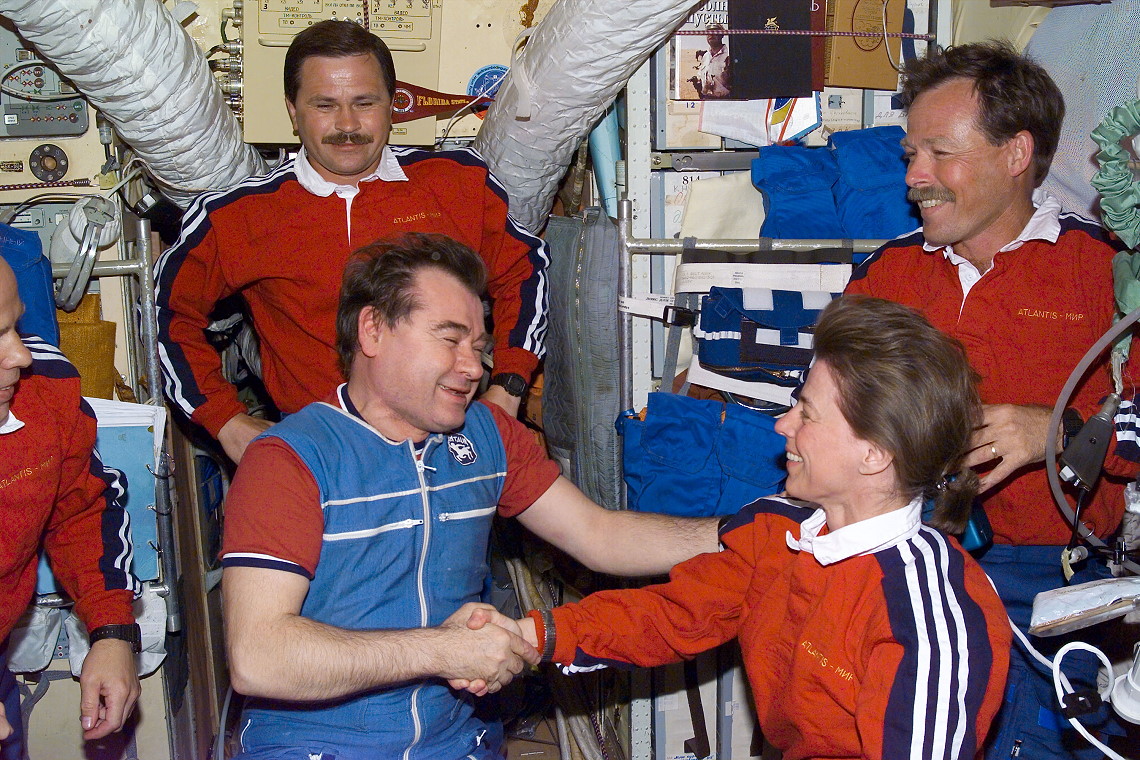
But science frequently gave way to ceremony on this most ceremonial of missions. On 30 June, the two crews assembled in the Spacelab module, with the Stars and Stripes and Russia’s tricolor flag providing a suitably patriotic backdrop. There, the astronauts and cosmonauts joined the two halves of a pewter medallion with a relief image of the docked shuttle-Mir combo. A 1/200-scale model of the spacecraft was displayed and a proclamation of the mission’s success was signed by all ten crew members.
Unlike ASTP two decades earlier, STS-71 was not a standalone “détente” mission, but the start of a new era in which the two old enemies would join their human space programs. “The success of this endeavour demonstrates the desire of these two nations to work co-operatively,” the proclamation declared, “to achieve the goal of providing tangible scientific and technical rewards that will have far-reaching effects to all people of the Planet Earth.”
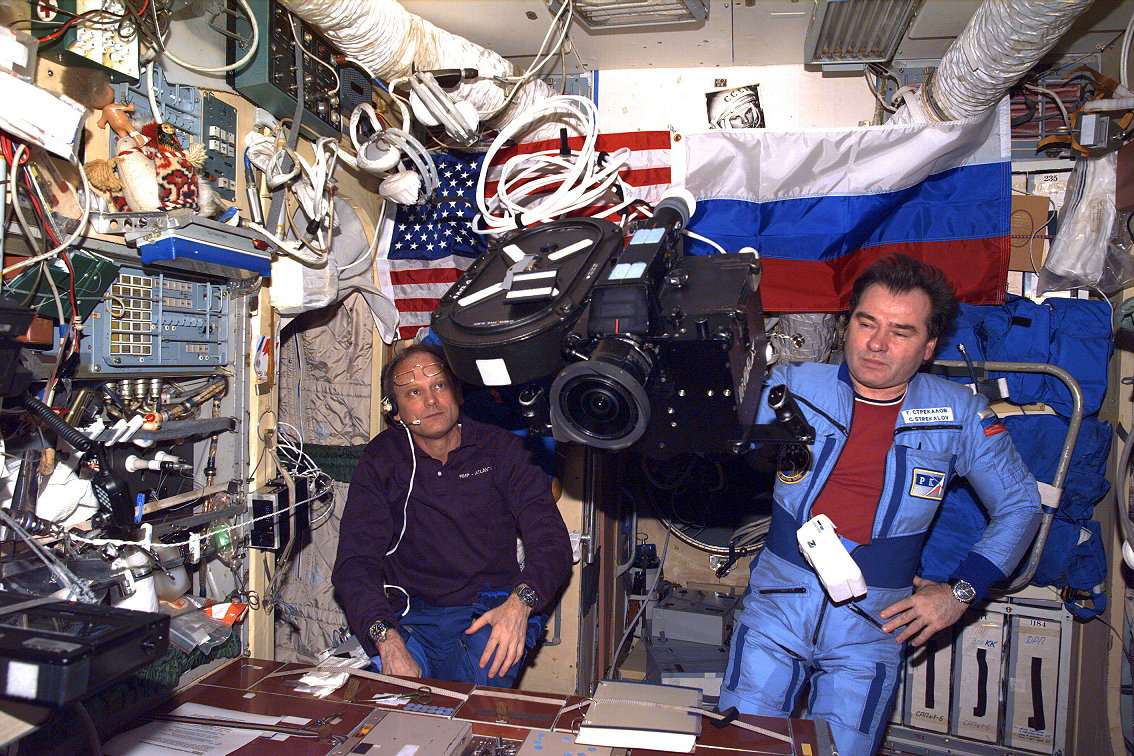
It was already intended that Mir’s new crew of Solovyov and Budarin would board and undock Soyuz TM-21 from the aft longitudinal port of the Kvant module about 15 minutes prior to Atlantis’ own undocking on 4 July to capture still and video imagery.
In readiness for the task, on the 2nd, the cosmonauts checked out their pressure suits and performed leak checks of their ship. Finally, on the afternoon of the 3rd, the two crews parted company and the STS-71 crew handed over gifts of flight pins, watches, fresh fruit and tortillas to Solovyov and Budarin.
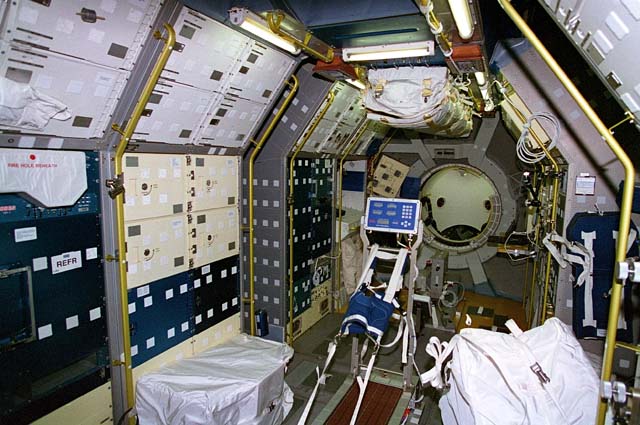
The “great big, soft Mexican tortillas” were Dunbar’s idea. Having trained closely with Solovyov and Budarin for more than a year as backups to Dezhurov, Strekalov and Thagard, she had grown exceptionally close to the two men. She knew Solovyov loved tortillas and, in fact, that both cosmonauts enjoyed American food.
Shortly before the hatches were closed between the two ships, Solovyov playfully tried to pull Dunbar over to Mir, asking which side she would like to stay on. As much as Dunbar dearly wanted a long-duration mission, she told Solovyov that she had to return with the shuttle. The station’s hatch by Solovyov and the ODS hatch by Harbaugh on the afternoon of 3 July, setting up for undocking in the early hours of America’s Independence Day.
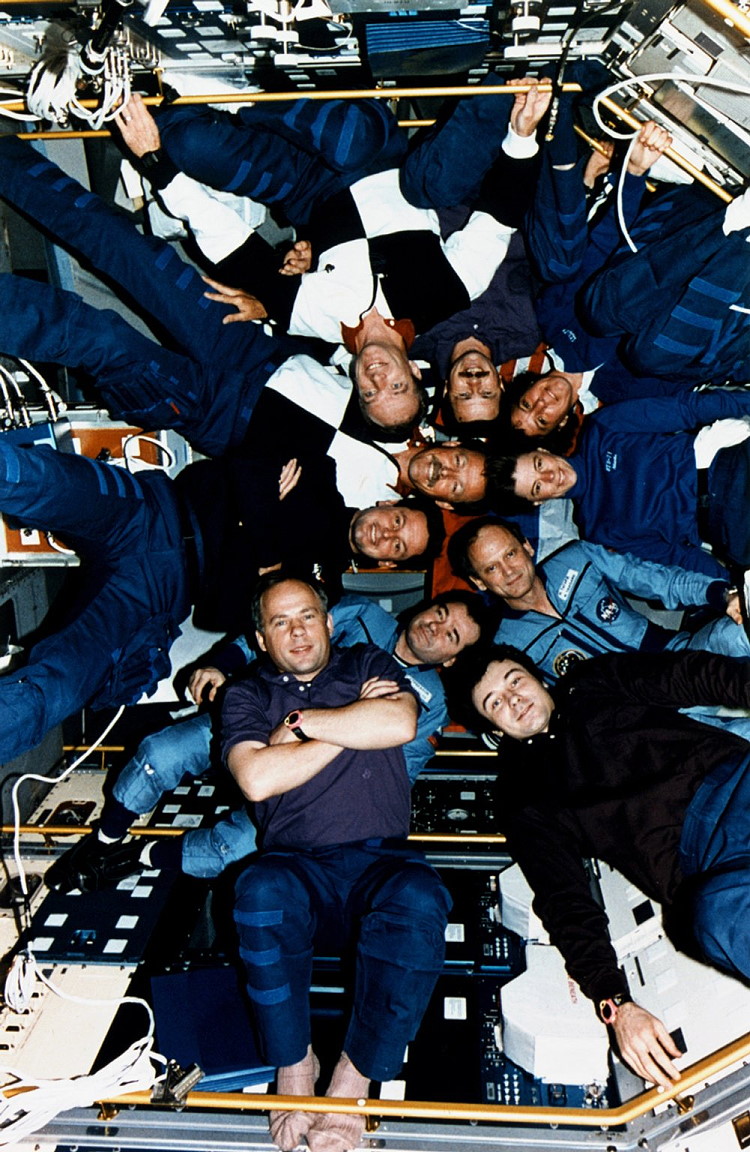
At 6:55 a.m. EDT on the 4th, Soyuz TM-21 undocked from Mir and pulled away to 330 feet (100 meters), which enabled Budarin to shoot spectacular pictures of Atlantis undocking at 7:09 a.m. EDT. As Gibson moved away to 400 feet (120 meters), he performed a steady flyaround inspection of the station and the STS-71 crew in turn videotaped the redocking of Soyuz TM-21 with Mir at 7:39 a.m. EDT.
Unfortunately, the redocking had to take place a minute sooner than planned when the station’s computer malfunctioned and crashed; Mir had been left in free-drift, as planned, but it was a few degrees off its correct attitude and was becoming unstable. Solovyov and Budarin promptly restored the station’s systems to normal. For Gibson, watching from Atlantis, the manoeuvres of Soyuz, Mir and the shuttle were nothing less than a “cosmic ballet”. Indeed, the pictures snapped that Independence Day in 1995 are among the most stunning from the shuttle era.
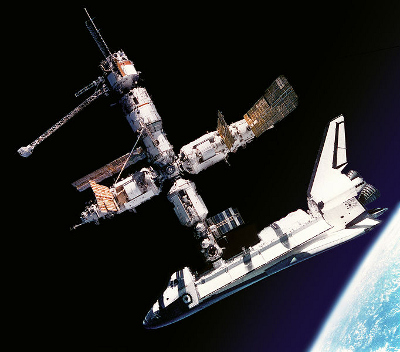
With landing scheduled for 7 July, Baker set to work assembling the recumbent seats on Atlantis’ middeck to ease the return to terrestrial gravity of Dezhurov, Strekalov and Thagard. Having the Russians aboard the shuttle was a pleasant surprise, although it did afford Dezhurov the chance to execute a prank on Precourt at one point.
At one point, the pilot was working on a volt ohm meter on the aft flight deck, fixing a broken circuit, when the cosmonaut floated up behind him and whispered “Pffffffttttt” in his ear. Precourt was so absorbed in his work that he did not even sense Dezhurov’s appearance. “You can’t jump in space, but you can sure go reeling in zero gravity,” Precourt told the NASA oral historian. “I could’ve choked him, but he had this big grin on his face!”
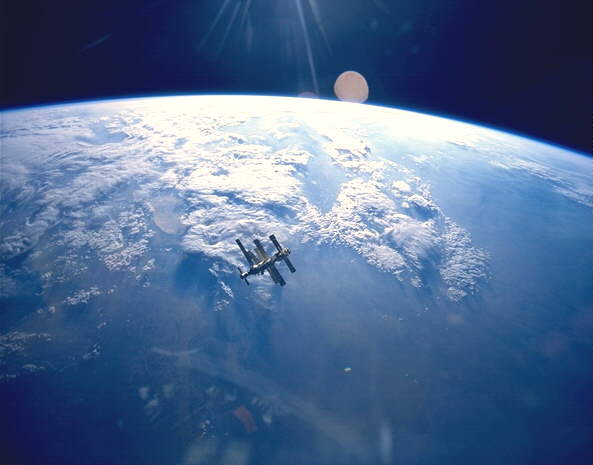
Early on the 7th, Gibson fired Atlantis’ braking thrusters on the first landing opportunity of the day and brought his ship swooping to a smooth touchdown on Runway 15 at the Kennedy Space Center (KSC) at 10:54 a.m. EDT. But for Dezhurov and Strekalov, there was momentary alarm, for both men wondered if they would be challenged by U.S. immigration authorities for carrying no passports or travel visas. At one point on Mir, Strekalov pulled Thagard aside to express his concerns.
“I kept trying to allay Gennadi,” Thagard said later. “Of course, he comes from a different culture, but knowing what I know of bureaucracy, I should have been worried a little bit for him, but I couldn’t believe that in a million years they were going to arrest Veloga or Gennadi because they arrived in the United States with no passport. I hadn’t even thought about it, but Gennadi obviously had been thinking about it quite a lot.”
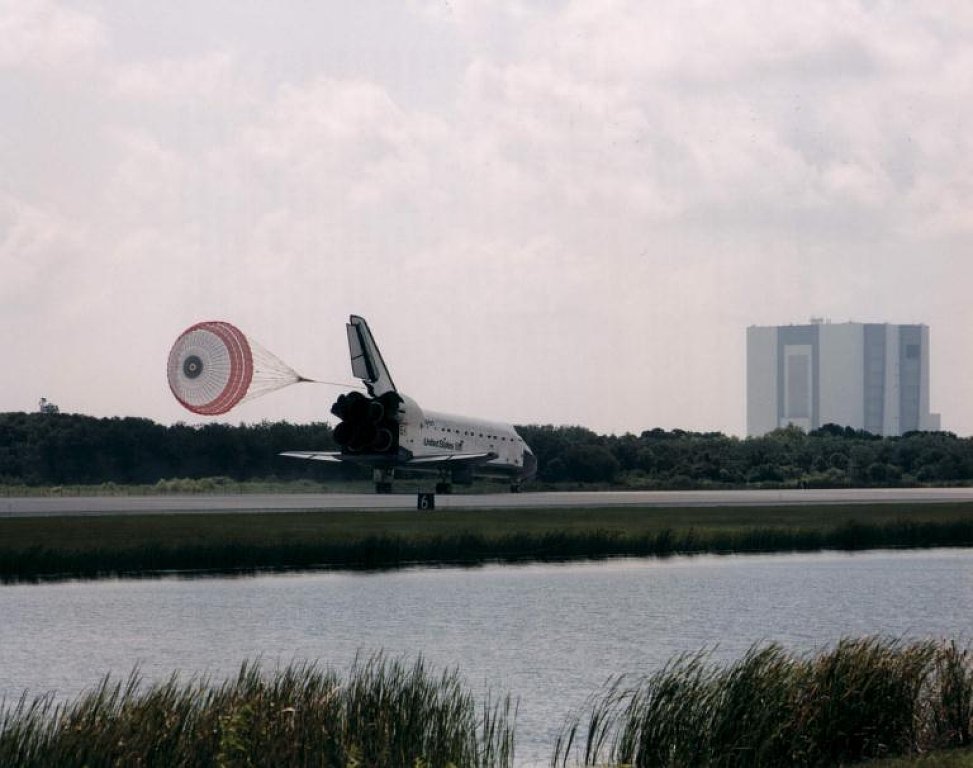
Dezhurov, Strekalov and Thagard were a little unsteady on their feet after four months in space. Yet Thagard was the first of them to unstrap from his seat and stand up after Atlantis’ landing. “I walked off with no assistance,” he said later. “I didn’t have that much of a problem.” The biggest issue, in fact, was the wiring for biomedical sensors, an electrocardiograph and a blood pressure cuff, which left his arm bruised and limited sensation in his hand.
It took America’s most experienced astronaut a few days to return to his normal self. “I felt a little awkward; more so than on my shorter shuttle flights,” he said. “I had a real sensation that if I were to bend forward, I’d continue to go forward, and if I bent back, I’d continue to go back.” Walking down hallways and turning provided the sensation of overshooting the corner and bruising his arm on the wall. “You just don’t turn sharply enough,” Thagard said, “and that’s all because of the gains that change in the vestibular system while you’re there.” A few days after landing, he went jogging with Precourt and Baker, which he described as the hardest run he had ever done.
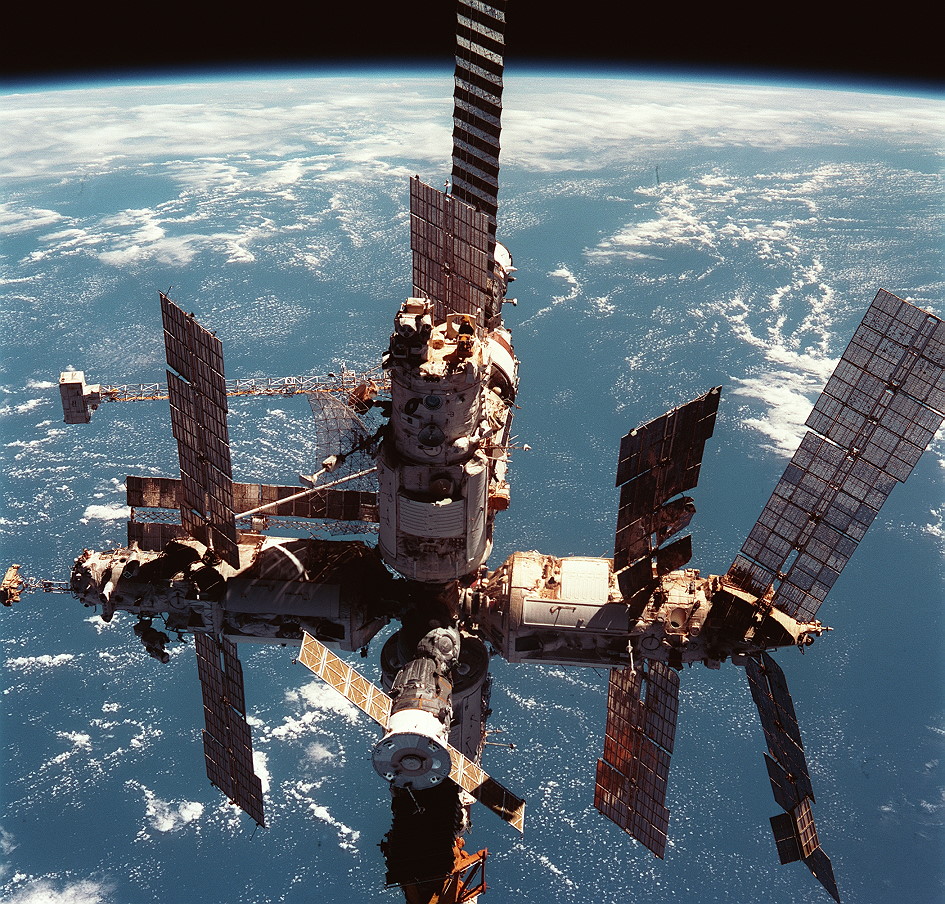
Although it was not the first time a cosmonaut had flown on the shuttle, or the first time an astronaut had flown aboard Mir, the ten days of STS-71 in the summer of 1995 were a significant moment in the future history of the joint U.S. and Russian space efforts. Over the next three years, eight more shuttle-Mir docking missions took place, exchanging six American crew members, delivering equipment and supplies and learning how two very dissimilar cultures could work together in space.
The endeavour produced its own life-threatening challenges—including a fire aboard Mir and the crash of an unmanned Progress supply ship—but in many ways the shuttle-Mir effort was critical in allowing these two former enemies to work productively together. And today, as the world approaches 20 years of permanent habitation of the International Space Station, the lessons learned on STS-71 continue to bear great fruit.
.
.
FOLLOW AmericaSpace on Facebook and Twitter!
.
.




